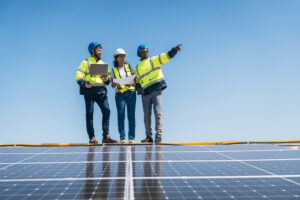
Could Your Rooftop Solar Panels Spark a Fire? — 9 PV Safety Checks & Isolation Tips
UK rooftop solar capacity grew 37 % in 2024 alone, yet insurers now list poorly installed PV arrays as an emerging ignition source . While incidents remain rare, faulty DC connectors, damaged cables or trapped heat under modules have triggered more than 50 recorded UK fires since 2010 . Follow the nine checks below to keep your panels generating — not igniting.
Why PV Fires Are Different
Unlike grid-fed electrics, a PV string keeps producing up to 1,000 V DC in daylight, even after you switch off the main breaker. Arcing DC is hard to extinguish and can re-ignite roofing materials . Fire crews therefore need rapid isolation and clear roof access .
9 Essential PV Fire-Safety Checks
- MCS-certified design & install — use only contractors approved under the Microgeneration Certification Scheme. Poor workmanship caused 26 % of PV fires investigated by BRE .
- RC62 layout compliance — follow breakout distances, cable routing & inverter positioning in RC62:2023.
- Dedicated DC isolator per string — fit double-pole switch-disconnectors rated DC PV-2 as required by BS 7671 §712 and NICEIC guidance.
- Arc-fault detection & monitoring — smart inverters cut output within < 0.3 s if arcing is detected .
- Fire-rated cable management — route DC cables in metal trunking or intumescent trays to stop flame spread .
- Quarterly thermal-imaging survey — spot hot spots >85 °C that precede connector failure; log results in your Fire-Risk Assessment.
- Clear roof pathways — leave 1 m fire-fighter access on pitched roofs and 1.5 m on flats per NFCC best practice .
- Module cleaning & torque checks — loose clamps were a root cause in 12 % of PV roof fires .
- Permanent “PV-ISOLATE HERE” signage at eye level beside the main AC & DC switches so crews can de-energise fast .
Choosing the Right Extinguishers
- Water-Mist (Dielectric) 6 L — cools modules & frames; safe on live DC up to 35 kV.
- CO2 5 kg — tackles inverter or combiner-box fires but offers no cooling.
- ABC Powder — effective but messy; use only outdoors to avoid contamination.
Need servicing? Our extinguisher team maintains units to BS 5306.
PV Fire vs. Gas-Boiler Fire — The Numbers
Research for Historic England shows PV fires occur at a rate of 0.007 % of UK installs, yet the average loss is double that of boiler fires due to roof damage .
30-Second Emergency Plan
- Operate the rooftop or ground-level DC isolator.
- Isolate the main AC supply.
- Evacuate occupants; keep clear of falling debris.
- Call 999 and state “solar-PV roof fire with live DC”.
Next Steps
Book a PV Fire-Safety Audit with Total Safe UK — we check isolators, signage and roof access against RC62 and BS 7671. Call 01375 265 950 or email [email protected].
Curious about other electrical hazards? Read our guide: EV Charging-Point Fire Safety.
